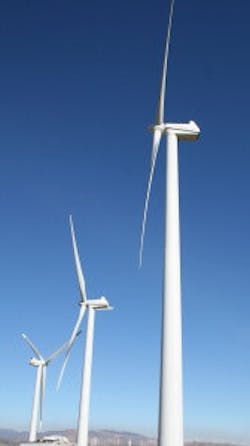New York’s Microgrids Exempt from Clean Energy Standard — For Now
Credit: Ian Prowell
New York’s microgrids will not be required to comply with the state’s new clean energy standard, but the idea will be taken up again by state regulators in 2020.
That’s the word from the state Public Service Commission in an order issued Monday that requires 50 percent of the state’s electric supply come from renewable energy by 2030.
The requirement will be carried out by a broad range of players that serve retail customers – utilities, competitive retail suppliers, community choice aggregations, municipal utilities, and retail customers that self-supply through the New York Independent System Operator.
Utilities and others had urged the commission to apply the standard to microgrids as well. But the commission spared New York’s microgrids from the obligation out of concern that it could become an obstacle to the fledgling industry.
The commission also noted that microgrids don’t yet serve a large number of customers in New York. The state is expected to see a significant ramping up of microgrid development because of its $40 million NY Prize, a microgrid incentive program.
For similar reasons, combined heat and power plants (CHP) are exempt. But the state will re-examine its decision to exempt both microgrids and CHP when it undertakes its first triennial review of the clean energy standard in four years.
Those required to participate must meet the standard by acquiring renewable energy credits or by making an alternative compliance payment the New York State Energy & Research Development Authority. Proceeds will go toward helping developers finance new renewable energy sources.
The standard ramps up gradually over the years. In 2017, participants must procure 0.6 percent of their load from renewables, rising to 4.8 percent by 2021. Targets will escalate in later years at percentages yet to be specified.
New York describes the new clean energy standard as critical to its goal of reducing greenhouse gas emissions by 40 percent (from 1990 levels) by 2030 and 80 percent by 2050.
Renewable energy currently make up a small percentage of New York’s supply portfolio. As of 2014, its mix was roughly 37 percent natural gas, 31 percent nuclear, 23.5 percent hydro, 4.5 percent coal, 3.5 percent wind, solar, biomass and biogas, 1.3 percent solid waste, and 0.4 percent oil.
New York’s decision means that six jurisdictions, which together have almost one-fifth of the U.S. population or almost 65 million people – now have at least a 50 percent renewables requirement, according to Kit Kennedy of the Natural Resources Defense Council. The others are California, Vermont, Hawaii and Oregon and the District of Columbia.
Read more about New York’s microgrids by subscribing the free Microgrid Knowledge newsletter.
About the Author
Elisa Wood
Editor-in-Chief
Elisa Wood is the editor and founder of EnergyChangemakers.com. She is co-founder and former editor of Microgrid Knowledge.
